Implementation, Consulting, Auditing & Certification at one place . We focus on taking your business to new heights.
The ISO 45001 certification in Afghanistan focuses on creating a safe and healthy work environment, reducing workplace risks, preventing work-related injuries and illnesses, and continually improving occupational health and safety performance. It is applicable to organizations of all sizes and industries. ISO 45001 is a certification standard that provides a framework for occupational health and safety management systems (OHSMS). It outlines the requirements and guidelines for organizations to establish, implement, and maintain a system to improve occupational health and safety performance.
By obtaining ISO 45001 certification in Afghanistan, organizations can demonstrate their commitment to the health and safety of their employees, improve their reputation, and enhance their ability to meet legal and regulatory requirements related to occupational health and safety management in Afghanistan.
To obtain ISO 45001 certification in Afghanistan, organizations need to follow certain steps:
An ISO 45001 gap analysis is a systematic process of assessing an organization’s current occupational health and safety (OHS) management system against the requirements of the ISO 45001 standard. It helps identify areas where the organization’s practices and processes fall short of meeting the standard’s requirements. Here’s a step-by-step guide to conducting an ISO 45001 gap analysis in Afghanistan:
By conducting an ISO 45001 gap analysis in Afghanistan for your Company, organizations can identify areas of improvement in their OHS management systems, enhance workplace safety, reduce risks, and work towards achieving ISO 45001 certification in Afghanistan.
ISO 45001 documentation work in Afghanistan refers to the set of documents required to establish and maintain an effective occupational health and safety (OHS) management system in accordance with the ISO 45001 standard. These documents serve as evidence of the organization’s commitment to managing occupational health and safety risks and complying with relevant legal and regulatory requirements.
Here are some key documents typically associated with ISO 45001 Certification in Afghanistan are OHS Policy, OHS Manual, OHS Objectives and Targets, Risk Assessment and Control Documentation, Legal and Regulatory Compliance Documentation, Emergency Preparedness and Response Plan, Incident and Accident Reporting Forms, Training and Competence Records, Internal Audit Reports and Management Review Records.
It is important to note that the specific documentation requirements may vary depending on the organization’s size, industry, and complexity. ISO 45001 in Afghanistan does not prescribe specific formats for documentation, but it emphasizes the need for clear, accessible, and updated documentation that supports the effective operation of the OHS management system in Afghanistan.
ISO 45001 implementation in Afghanistan demonstrates a commitment to ensuring the well-being of employees and creating a safe working environment. In this article, we will provide a step-by-step guide to help organizations successfully implement ISO 45001 and enhance workplace health and safety.
Step 1: Understanding the ISO 45001 Standard
Before beginning the implementation process, it is essential to familiarize yourself with the ISO 45001 standard. Read and understand the requirements, key concepts, and principles outlined in the standard to gain a clear understanding of what needs to be implemented.
Step 2: Conduct a Gap Analysis
Perform a comprehensive gap analysis to assess your organization’s existing health and safety management system against the ISO 45001 requirements in Afghanistan. Identify areas where your current practices fall short and determine the necessary actions and resources required to bridge the gaps.
Step 3: Establish a Project Team
Form a dedicated project team consisting of individuals from various departments within your organization. Assign roles and responsibilities to team members to ensure effective implementation and coordination of the ISO 45001 project.
Step 4: Develop a Health and Safety Policy
Create a health and safety policy that aligns with the principles of ISO 45001 Certification in Afghanistan. This policy should clearly state your organization’s commitment to workplace health and safety and serve as a guiding document for implementing the necessary controls and measures.
Step 5: Define Objectives and Targets
Set specific and measurable health and safety objectives and targets that align with your organization’s overall goals. These objectives should be realistic and achievable, promoting continuous improvement in workplace health and safety performance.
Step 6: Identify and Assess Hazards
Conduct a thorough identification and assessment of workplace hazards. This involves evaluating potential risks and their potential impact on employee health and safety. Use tools such as risk assessments, incident reports, and employee feedback to gather relevant information.
Step 7: Implement Controls and Measures
Based on the identified hazards, develop and implement appropriate controls and measures to eliminate or minimize risks. This may include implementing engineering controls, administrative controls, and personal protective equipment (PPE) measures.
Step 8: Establish Emergency Response Procedures
Develop and implement emergency response procedures to address potential incidents or accidents. These procedures should outline the necessary actions to be taken in the event of emergencies, including evacuation plans, communication protocols, and medical response procedures.
Step 9: Provide Training and Awareness
Ensure that all employees receive adequate training and awareness programs related to workplace health and safety. Train employees on the importance of ISO 45001 compliance in Afghanistan in their company and their roles and responsibilities, and the proper use of safety equipment and procedures.
Step 10: Monitor and Measure Performance
Establish a system for monitoring and measuring the performance of your health and safety management system. This may include regular inspections, audits, incident investigations, and key performance indicators (KPIs) to track progress and identify areas for improvement.
Step 11: Conduct Management Reviews
Regularly conduct management reviews to evaluate the effectiveness of your ISO 45001 implementation in Afghanistan for your company. This involves analyzing performance data, reviewing objectives and targets, and making necessary adjustments to the health and safety management system.
Step 12: Continual Improvement
Promote a culture of continual improvement by implementing corrective actions and preventive measures. Encourage employee involvement and engagement in identifying opportunities for improvement and implementing innovative solutions to enhance workplace health and safety.
Achieving ISO 45001 accreditation in Afghanistan is a significant milestone for organizations, as it demonstrates their commitment to ensuring workplace health and safety. we will discuss the importance of choosing an accredited certification body for ISO 45001 accreditation in Afghanistan and the benefits it brings. Accreditation is the process by which a certification body is formally recognized and authorized to conduct audits and issue ISO 45001 certificates. Accreditation ensures that the certification body meets specific criteria and operates in accordance with international standards, ensuring the integrity and credibility of the certification process.
The Importance of Choosing an ISO 45001 Accredited Certification in Afghanistan?
The Importance of ISO 45001 Certification in Afghanistan offers several key advantages:
ISO 45001 emphasizes the importance of conducting risk assessments as part of the occupational health and safety management system. Risk assessments help identify, evaluate, and prioritize potential hazards and risks within the workplace. Here are the key steps involved in conducting a risk assessment according to ISO 45001 Certification in Afghanistan:
Establish the scope > Identify hazards > Determine who might be harmed > Assess the risks >Prioritize risks >Control measures > Review effectiveness > Record keeping> Communication and consultation > Review and update.
An ISO 45001 audit in Afghanistan is a systematic and independent examination of an organization’s occupational health and safety (OHS) management system to assess its compliance with the requirements of the ISO 45001 Certification in Afghanistan. The audit aims to determine the effectiveness of the OHS management system, identify areas for improvement, and ensure ongoing compliance. Here’s an overview of the ISO 45001 audit process in Afghanistan:
Remember that the ISO 45001 Certification audit in Afghanistan is an essential part of the continual improvement process. It helps organizations identify strengths, weaknesses, and opportunities for enhancing their OHS management system and achieving better health and safety outcomes.
The cost of ISO 45001 certification in Afghanistan can vary depending on several factors, including the size and complexity of the organization, the certification body chosen, the geographic location, and the scope of certification. It is essential to contact certification bodies directly to obtain accurate and up-to-date pricing information. However, here are some common cost considerations associated with ISO 45001 certification in Afghanistan. The Cost of certification is varies based on few factors like Certification Body Fees, Stage 1 and Stage 2 Audits, Consultancy Services, Surveillance Audits, Documents review and preparation, Gap Analysis, Implementation, trainings, Travel and Accommodation for the consultants and Auditor, Surveillance Audits, External Audits and Certification Charges.
It is important to note that while certification costs are an investment, the benefits of ISO 45001 certification for your company in Afghanistan, such as improved workplace safety, legal compliance, and enhanced reputation, can outweigh the initial expenses. It is recommended to consider the long-term value and potential return on investment that ISO 45001 certification can bring to the organization.
ISO 45001 Compliance in Afghanistan is applicable to organizations of all sizes and industries. It is designed to be flexible and adaptable to meet the specific needs and contexts of different sectors. Therefore, virtually all industries can be eligible for ISO 45001 certification. Some examples of industries that commonly pursue ISO 45001 certification in Afghanistan includes Manufacturing companies, Construction companies, Healthcare companies, Energy and utilities companies, Transportation and logistics companies, Mining and extraction companies, Retail and hospitality, IT companies, Schools, universities, and educational institutions and Government and public service. The standard’s broad applicability allows organizations from diverse industries to establish robust occupational health and safety management systems and demonstrate their commitment to the well-being of their workforce.
ISO 45001 consultants in Afghanistan play a crucial role in guiding organizations through the implementation of the standard. Their expertise, knowledge, and support help organizations achieve successful ISO 45001 implementation, enhance workplace health and safety, and reap the benefits of a robust management system. When engaging ISO 45001 consultants in Afghanistan, conduct thorough research, and select consultants who align with your organization’s goals and values. With their guidance, organizations can navigate the complexities of ISO 45001 implementation with confidence.
Before Choosing right iso 45001 consultants in Afghanistan? We should look out their Experience and Expertise, Reputation and References, Compatibility and Communication, Credentials and Certification and Cost and ROI.
Engaging ISO 45001 consultants in Afghanistan can bring several benefits to organizations:
ISO 45001 certification is an internationally recognized standard that outlines the requirements for an effective occupational health and safety management system. It helps organizations proactively identify and manage risks, reduce workplace accidents, and promote employee well-being.
ISO 45001 certification is mandatory in Afghanistan. However, it provides organizations with a robust framework to meet legal requirements and enhance workplace safety.
The time required to achieve ISO 45001 certification depends on various factors, including the size of the organization, complexity of operations, and existing health and safety practices. It typically takes several months to a year to implement the necessary changes and undergo the certification process.
Yes, ISO 45001 certification is applicable to organizations of all sizes. Small businesses in Afghanistan can benefit from implementing the standard’s requirements and achieving certification to improve their workplace safety and competitiveness.
ISO 45001 certification is valid for a specific period, usually three years. Organizations must undergo surveillance audits during this period to ensure that they continue to meet the requirements of the standard and maintain their certification.
Yes, ISO 45001 is designed to be compatible with other management system standards, such as ISO 9001 (Quality Management) and ISO 14001 (Environmental Management). Organizations can integrate the requirements of multiple standards to streamline their management processes.
ISO 45001 provides a systematic framework for identifying, controlling, and reducing health and safety risks in the workplace. By implementing ISO 45001, organizations can improve their health and safety performance, enhance worker well-being, and comply with legal and regulatory requirements.
ISO 45001 helps organizations identify and understand relevant legal and regulatory requirements related to occupational health and safety. By ensuring compliance with these requirements, organizations can avoid penalties, reputational damage, and legal liabilities.





















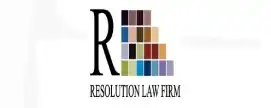

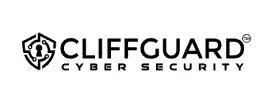






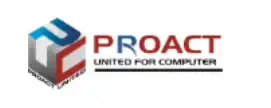

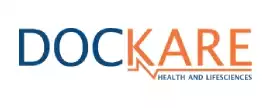

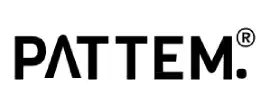


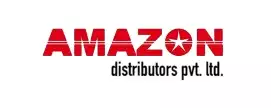
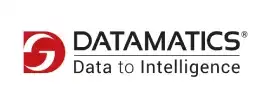
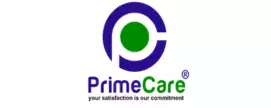










B2BCERT is a Solutions & Service organization, specialized in management consulting, Trainings, Assessments, Certification & Managed Services
MOST SEARCHED ON B2BCERT: ISO 9001 Certification | CE Certification | ISO 22000 Certification | NEMA Certification | ISO 27701 Certification | ISO 27032 Certification | ISO 22483 Certification | REACH Certification | ISO 22301 Certification | ISO 42001 Certification | ISO 41001 Certification | ISO 21001 Certification | ISO 15189 Certification | GMP Certification | GDPR Certification | GDP Certification | GLP Certification | HIPAA Certification | PCI DSS Certification | SOC 1 Certification | KOSHER Certification | NEMA Certification | Certificate of Conformity | GACP Certification | FSSC 22000 Certification | OHSAS 18001 Certification | HACCP Certification | SA 8000 Certification | SOC 2 Certification | VAPT Certification | ROHS Certification | BIFMA Certification | FCC Certification | HALAL Certification
ISO CERTIFICATIONS: ISO 9001 Certification | ISO 14001 Certification | ISO 45001 Certification | ISO 22000 Certification | ISO 27001 Certification | ISO 13485 Certification | ISO 17025 Certification | ISO 27701 Certification | ISO 20000-1 Certification | ISO 27032 Certification | ISO 22483 Certification | ISO 26000 Certification | ISO 22301 Certification | ISO 42001 Certification | ISO 27017 Certification | ISO 27018 Certification | ISO 50001 Certification | ISO 27014 Certification | ISO 29990 Certification | ISO 37001 Certification | ISO 41001 Certification | ISO 21001 Certification | ISO 55001 Certification | ISO 28000 Certification | ISO 22716 Certification | ISO 15189 Certification | ISO 41001 Certification
PRODUCT CERTIFICATIONS: FSSC 22000 Certification | OHSAS 18001 Certification | HACCP Certification | SA 8000 Certification | GMP Certification | GDPR Certification | GDP Certification | GLP Certification | HIPAA Certification | PCI DSS Certification | SOC 1 Certification | SOC 2 Certification | VAPT Certification | CE Certification | ROHS Certification | BIFMA Certification | FCC Certification | HALAL Certification | KOSHER Certification | NEMA Certification | REACH Certification | Certificate of Conformity | GHP Certification | Free Sale Certification | FDA Certification | GACP Certification
WHAT IS B2BCERT: B2BCERT is one of the leading service providers for International recognized standards and Management solutions for Business development, process Improvement, Consulting & Certification services for various International Standards like ISO 9001, ISO 14001, ISO 45001, ISO 22000, ISO 27001, ISO 20000, CE Marking, HACCP & many more. B2BCERT works on the values of trust, fairness & genuine respect for our customers, employees, and business partners.B2BCERT provides internationally recognized standards and management solutions, specializing in ISO and related certification services. Headquartered in Bangalore, India, we have a global presence in the Middle East and Africa. Our team of 30+ professionals ensures tailored solutions by partnering with leading certification firms.
B2BCERT Serves In: India | Nepal | Singapore | Afghanistan | Philippines | Malaysia | Jordan | Turkey | Sri Lanka | Saudi Arabia | Oman | UAE | Kuwait | Yemen | Qatar | Lebanon | Iran | Iraq | Bahrain | South Africa | Egypt | Nigeria | Kenya | Ghana | Tanzania | Zimbabwe | Cameroon | Uganda | USA | UK | Germany | Australia | New Zealand | Canada | Italy | Botswana | Brunei | Cambodia |
Service providing Sectors: Information Security | Manufacturing | Software Companies | Pharmaceuticals | Architecture | Construction | Food & Beverages | News & media | Science & Biotechnology | Electronics Industry | Telecommunications | Hospitals | Import & Export Businesses | Schools & Colleges | Textile Industries | Banks | Aerospace Manufacturing | Hotels & Restaurants | Organic Products | Mining & Renewable Business | Real Estate Business | Public Administration | Wholesale Trade | Supply Chain Management | Agrochemicals | Government Services | Electricity | Regulatory Agencies | Fitness and Wellness | Property Management | Rental Services | Warehousing | Delivery Services | Stores and Shops | IT Support | Event Planning | Consulting | Financial Advisory |
WHY B2BCERT: 1. Expertise Across Standards: B2BCERT is a leader in providing comprehensive solutions for a wide range of international standards, including ISO 9001, ISO 14001, ISO 45001, ISO 22000, ISO 27001, ISO 20000, CE Marking, and HACCP. Our deep knowledge ensures that your business meets and exceeds industry benchmarks with confidence. 2. Tailored Solutions: We understand that every organization is unique. B2BCERT offers customized consulting and certification services designed to fit your specific needs and objectives. Our team works closely with you to develop strategies that enhance your business processes and meet regulatory requirements.3. Global Presence: With headquarters in Bangalore, India, and a strong foothold in the Middle East and Africa, B2BCERT combines local expertise with a global perspective. Our international reach allows us to provide consistent, high-quality service wherever you operate.4. Trusted Partners: We collaborate with leading certification firms to offer you the best possible service. Our established relationships with top certification bodies ensure that you receive credible and widely recognized certifications that enhance your business’s reputation.5. Commitment to Values: At B2BCERT, our core values of trust, fairness, and respect drive everything we do. We are dedicated to building lasting relationships based on integrity and genuine respect for our clients, employees, and partners.6. Professional Team: Our team of over 30 skilled professionals brings a wealth of experience and dedication to every project. We are committed to delivering excellence and supporting you through every step of your certification journey.7. Comprehensive Support: From initial consultation to certification and beyond, B2BCERT provides end-to-end support. We are here to guide you through the complexities of compliance and help you achieve your business goals efficiently and effectively.